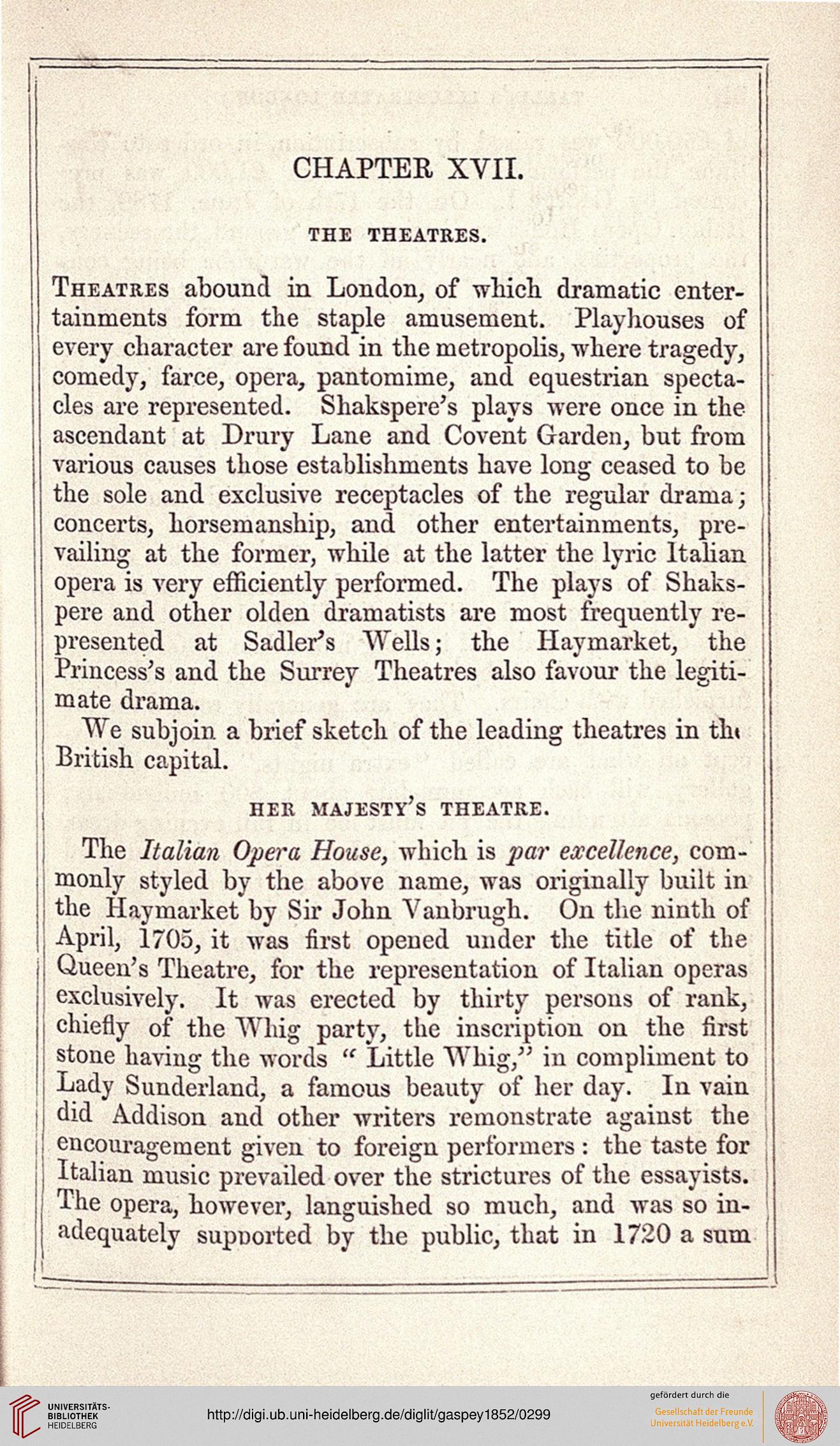CHAPTEE, XVII.
THE THEATRES.
Theatres abound in London, of which dramatic enter-
tainments form the staple amusement. Playhouses of
every character are found in the metropolis, where tragedy,
comedy, farce, opera, pantomime, and equestrian specta-
cles are represented. Shakspere's plays were once in the
ascendant at Drury Lane and Covent Garden, but from
various causes those establishments have long ceased to be
the sole and exclusive receptacles of the regular drama j
concerts, horsemanship, and other entertainments, pre-
vailing at the former, while at the latter the lyric Italian
opera is very efficiently performed. The plays of Shaks-
pere and other olden dramatists are most frequently re-
presented at Sadler's Wells; the Haymarket, the
Princess's and the Surrey Theatres also favour the legiti-
mate drama.
We subjoin a brief sketch of the leading theatres in tin
British capital.
HEK MAJESTY'S THEATRE.
The Italian Opera House, which is par excellence, com-
monly styled by the above name, was originally built in
the Haymarket by Sir John Vanbrugh. On the ninth of
April, 1705, it was first opened under the title of the
Queen's Theatre, for the representation of Italian operas
exclusively. It was erected by thirty persons of rank,
chiefly of the Whig party, the inscription on the first
stone having the words " Little Whig/' in compliment to
Lady Sunderland, a famous beauty of her day. In vain
did Addison and other writers remonstrate against the
encouragement given to foreign performers : the taste for
Italian music prevailed over the strictures of the essayists.
The opera, however, languished so much, and was so in-
adequately supDorted by the public, that in 1720 a sum
THE THEATRES.
Theatres abound in London, of which dramatic enter-
tainments form the staple amusement. Playhouses of
every character are found in the metropolis, where tragedy,
comedy, farce, opera, pantomime, and equestrian specta-
cles are represented. Shakspere's plays were once in the
ascendant at Drury Lane and Covent Garden, but from
various causes those establishments have long ceased to be
the sole and exclusive receptacles of the regular drama j
concerts, horsemanship, and other entertainments, pre-
vailing at the former, while at the latter the lyric Italian
opera is very efficiently performed. The plays of Shaks-
pere and other olden dramatists are most frequently re-
presented at Sadler's Wells; the Haymarket, the
Princess's and the Surrey Theatres also favour the legiti-
mate drama.
We subjoin a brief sketch of the leading theatres in tin
British capital.
HEK MAJESTY'S THEATRE.
The Italian Opera House, which is par excellence, com-
monly styled by the above name, was originally built in
the Haymarket by Sir John Vanbrugh. On the ninth of
April, 1705, it was first opened under the title of the
Queen's Theatre, for the representation of Italian operas
exclusively. It was erected by thirty persons of rank,
chiefly of the Whig party, the inscription on the first
stone having the words " Little Whig/' in compliment to
Lady Sunderland, a famous beauty of her day. In vain
did Addison and other writers remonstrate against the
encouragement given to foreign performers : the taste for
Italian music prevailed over the strictures of the essayists.
The opera, however, languished so much, and was so in-
adequately supDorted by the public, that in 1720 a sum




